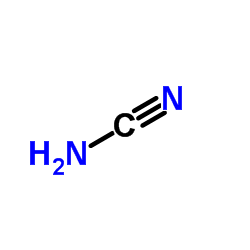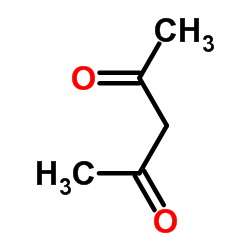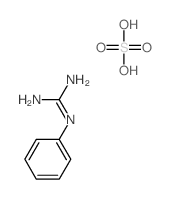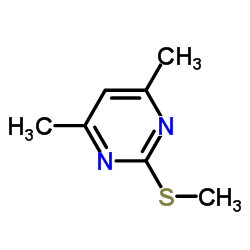pyrimethanil
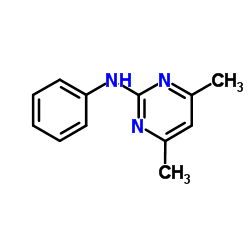
pyrimethanil structure
|
Common Name | pyrimethanil | ||
|---|---|---|---|---|
| CAS Number | 53112-28-0 | Molecular Weight | 199.252 | |
| Density | 1.1±0.1 g/cm3 | Boiling Point | 362.8±45.0 °C at 760 mmHg | |
| Molecular Formula | C12H13N3 | Melting Point | 96°C | |
| MSDS | Chinese USA | Flash Point | 173.2±28.7 °C | |
| Symbol |

GHS09 |
Signal Word | ||
Use of pyrimethanilPyrimethanil is an anilinopyrimidine and broad-spectrum contact fungicide for the control of Botrytis spp. on a wide variety of crops[1]. Pyrimethanil inhibits the biosynthesis of methionine and other amino acids in Botrytis cinerea. Pyrimethanil can be used for the research of fungal diseases prevention on fruit, vegetable and ornamental plants with mold infection[3]. |
| Name | pyrimethanil |
|---|---|
| Synonym | More Synonyms |
| Description | Pyrimethanil is an anilinopyrimidine and broad-spectrum contact fungicide for the control of Botrytis spp. on a wide variety of crops[1]. Pyrimethanil inhibits the biosynthesis of methionine and other amino acids in Botrytis cinerea. Pyrimethanil can be used for the research of fungal diseases prevention on fruit, vegetable and ornamental plants with mold infection[3]. |
|---|---|
| Related Catalog | |
| In Vitro | Pyrimethanil is a strobilurin fungicide belonging to the anilinopyrimidine class. Pyrimethanil (5 and 50 µg/L) elicits a range of toxic responses, has the potential to induce histological alterations in tissues of the Italian tree frog H. intermedia after a long term exposure to two environmentally relevant concentrations of Pyrimethanil[2]. Pyrimethanil decreases polygalacturonase, cellulase, proteinase and laccase activities in the medium of three day‐old cultures. The pyrimethanil results in 50% reduction (IC50) in total enzyme activities are approximately 0.25 μM for polygalacturonase, cellulase and proteinase, and approximately 1.0 μM for laccase[3]. |
| References |
| Density | 1.1±0.1 g/cm3 |
|---|---|
| Boiling Point | 362.8±45.0 °C at 760 mmHg |
| Melting Point | 96°C |
| Molecular Formula | C12H13N3 |
| Molecular Weight | 199.252 |
| Flash Point | 173.2±28.7 °C |
| Exact Mass | 199.110947 |
| PSA | 37.81000 |
| LogP | 2.84 |
| Vapour Pressure | 0.0±0.8 mmHg at 25°C |
| Index of Refraction | 1.622 |
| InChIKey | ZLIBICFPKPWGIZ-UHFFFAOYSA-N |
| SMILES | Cc1cc(C)nc(Nc2ccccc2)n1 |
| Storage condition | 0-6°C |
| Water Solubility | 0.121 g/L (25 ºC) |
|
Material Safety Data Sheet
Section1. Identification of the substance Product Name: Pyrimethanil Synonyms: Section2. Hazards identification Harmful by inhalation, in contact with skin, and if swallowed. Section3. Composition/information on ingredients. Ingredient name:Pyrimethanil CAS number:53112-28-0 Section4. First aid measures Skin contact:Immediately wash skin with copious amounts of water for at least 15 minutes while removing contaminated clothing and shoes. If irritation persists, seek medical attention. Eye contact:Immediately wash skin with copious amounts of water for at least 15 minutes. Assure adequate flushing of the eyes by separating the eyelids with fingers. If irritation persists, seek medical attention. Inhalation:Remove to fresh air. In severe cases or if symptoms persist, seek medical attention. Ingestion:Wash out mouth with copious amounts of water for at least 15 minutes. Seek medical attention. Section5. Fire fighting measures In the event of a fire involving this material, alone or in combination with other materials, use dry powder or carbon dioxide extinguishers. Protective clothing and self-contained breathing apparatus should be worn. Section6. Accidental release measures Personal precautions: Wear suitable personal protective equipment which performs satisfactorily and meets local/state/national standards. Respiratory precaution:Wear approved mask/respirator Hand precaution:Wear suitable gloves/gauntlets Skin protection:Wear suitable protective clothing Eye protection:Wear suitable eye protection Methods for cleaning up: Mix with sand or similar inert absorbent material, sweep up and keep in a tightly closed container for disposal. See section 12. Environmental precautions: Do not allow material to enter drains or water courses. Section7. Handling and storage Handling:This product should be handled only by, or under the close supervision of, those properly qualified in the handling and use of potentially hazardous chemicals, who should take into account the fire, health and chemical hazard data given on this sheet. Store in closed vessels. Storage: Section8. Exposure Controls / Personal protection Engineering Controls: Use only in a chemical fume hood. Personal protective equipment: Wear laboratory clothing, chemical-resistant gloves and safety goggles. General hydiene measures: Wash thoroughly after handling. Wash contaminated clothing before reuse. Section9. Physical and chemical properties Appearance:Not specified Boiling point:No data No data Melting point: Flash point:No data Density:No data Molecular formula:C12H13N3 Molecular weight:199.3 Section10. Stability and reactivity Conditions to avoid: Heat, flames and sparks. Materials to avoid: Oxidizing agents. Possible hazardous combustion products: Carbon monoxide, nitrogen oxides. Section11. Toxicological information No data. Section12. Ecological information No data. Section13. Disposal consideration Arrange disposal as special waste, by licensed disposal company, in consultation with local waste disposal authority, in accordance with national and regional regulations. Section14. Transportation information Non-harzardous for air and ground transportation. Section15. Regulatory information No chemicals in this material are subject to the reporting requirements of SARA Title III, Section 302, or have known CAS numbers that exceed the threshold reporting levels established by SARA Title III, Section 313. SECTION 16 - ADDITIONAL INFORMATION N/A |
| Precursor 9 | |
|---|---|
| DownStream 0 | |
| HS Code | 2933599014 |
|---|---|
| Summary | 2933599014 6-nitroso-7h-purine。supervision conditions:s(import or export registration certificate for pesticides)。VAT:17.0%。tax rebate rate:9.0%。MFN tarrif:6.5%。general tariff:20.0% |
|
Solarization and biosolarization enhance fungicide dissipation in the soil.
Chemosphere 79(2) , 216-20, (2010) Although there is some evidence regarding the effect of solarization and biosolarization on pesticide degradation, information is still scarce. The aim of this study was to determine the effect of the... |
|
|
Postinfection activity, residue levels, and persistence of azoxystrobin, fludioxonil, and pyrimethanil applied alone or in combination with heat and imazalil for green mold control on inoculated oranges.
J. Agric. Food Chem. 58(6) , 3661-6, (2010) The postinfection activity of azoxystrobin (AZX), fludioxonil (FLU), and pyrimethanil (PYR), applied alone or in combination with imazalil (IMZ), in controlling postharvest green mold in 'Salustiana' ... |
|
|
Determination of natural resistance frequencies in Penicillium digitatum using a new air-sampling method and characterization of fludioxonil- and pyrimethanil-resistant isolates.
Phytopathology 100(8) , 738-46, (2010) ABSTRACT Fungicide resistance was identified in natural populations of Penicillium digitatum, the causal agent of green mold of citrus, to two of three new postharvest fungicides before their commerci... |
| 4,6-Dimethyl-N-phenyl-2-pyrimidinamine |
| 4,6-dimethyl-n-phenyl-2-pyrimidinamin |
| N-(4,6-dimethylpyrimidin-2-yl)aniline |
| EINECS 414-220-3 |
| 2-Pyrimidinamine,4,6-dimethyl-N-phenyl |
| 4,6-dimethyl-N-phenylpyrimidin-2-amine |
| 4,6-dimethylpyrimidine-N-phenylimine |
| 2-anilino-4,6-dimethylpyrimidine |
| MFCD00172113 |
| Pyrimethanil |
